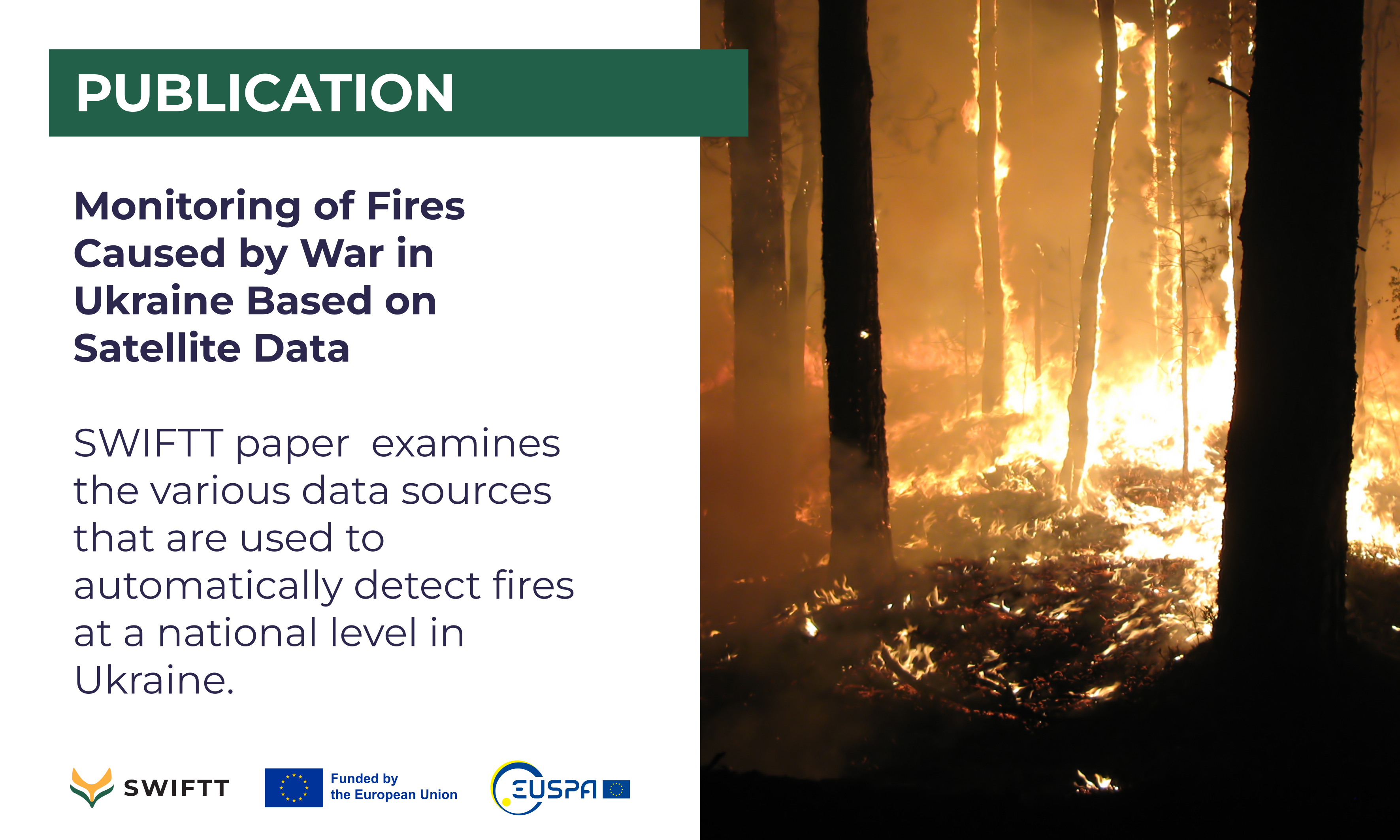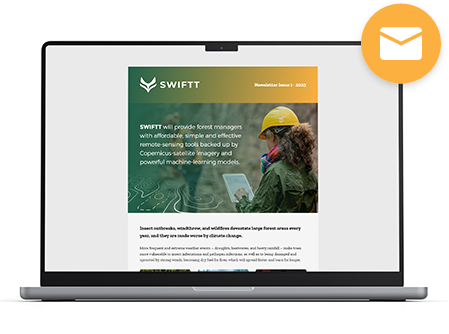06 February 2024


Wildfires destroy hundreds of thousands of hectares of wildland and forest areas every year. Climate change is set to make it all worse by increasing the duration and frequency of heat waves and droughts, which provide more dry fuel for wildfires which spread faster and burn for longer.
In a work presented at the 13th International Conference on Dependable Systems, Services and Technologies (DESSERT), held in Athens, Greece, in 2023, SWIFTT partners from the Space Research Institute of Ukraine and collaborators examine the various data sources that are used to automatically detect fires at a national level in Ukraine.
Existing fire risk prediction technologies, such as the European Forest Fire Information System (EFFIS), work with low-resolution data (8 km or worse), limiting the detail level at which high-quality fire risk predictions are reasonable. Therefore, the authors propose an approach that uses both low-and high-resolution satellite data for fire monitoring. Satellite data from MODIS, Landsat 8 and 9, and Sentinel 2 offer a variety of benefits, including high spatial resolution, frequent revisit times, and wide spectral coverage, which provide reliable information for fire monitoring in Ukraine.
The methodology developed in this study provides a promising approach to monitoring fires and understanding the causes of fires, particularly those caused by the war in Ukraine. The authors implemented the fire detection methodology and Fire Potential Index (FPI) assessment in the Google Earth Engine cloud platform, which allowed for efficient processing and analysis of large volumes of data.
Source: B. Yailymov, H. Yailymova, A. Shelestov and L. Shumilo, "Monitoring of Fires Caused by War in Ukraine Based on Satellite Data," 2023 13th International Conference on Dependable Systems, Services and Technologies (DESSERT), Athens, Greece, 2023, pp. 1-5, DOI: 10.1109/DESSERT61349.2023.10416520
-
Next Article
Workshop Copernicus for Forestry -
Previous Article
SWIFTT Newsletter #2 - View All Articles

